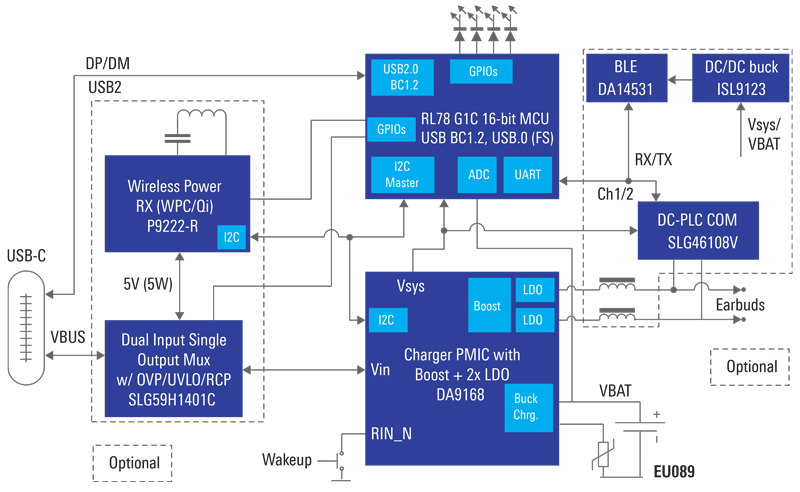During the last few years, Bluetooth® connected earbuds and headphones gained significant market share over their wired ancestors. Especially, True Wireless Stereo (TWS) earbuds gained massive popularity with approximately 300M+ units sold in 2021. Technically, these earbuds resemble in-ear hearing aids, except that they offer advanced features such as wireless connectivity (Bluetooth) and the higher-end devices, voice detection and voice recognition. Like hearing aids, TWS earbuds are typically recharged in cradles containing a larger battery and offer USB and/or wireless charging. The similarity between these two systems was recently recognized by the FDA. See the "FDA Issues Landmark Proposal to Improve Access to Hearing Aid Technology for Millions of Americans" news release.
The fact that TWS earbuds and hearing aids rely on small integrated batteries to function leads most users to carry the matching cradle/charger case with them to recharge these on the move, requiring a small size combined with fast and flexible charging of both the audio devices and the charging cradle.
Typical features of state-of-the-art charging cases are wireless charging (WPC/Qi), USB-C and legacy USB charging, independent supply rails to each audio device to fast charging support, Power Line Communication (PLC) for communication between the cradle unit and each earbud, and sometimes Bluetooth Low Energy (LE) connectivity to track the charging case State-of-Charge (SoC) and its location.
Renesas’ solution to all these requirements and functions is shown in the "True Wireless Stereo (TWS) Earbud Charger Cradle" winning combination. The core functionality of charging the cradle’s battery, generating a boosted voltage to charge the TWS earbuds or hearing aids and controlling each charging path separately is integrated in a single TWS cradle charging PMIC and battery management unit (DA9168).
Power to this PMIC is provided either through a USB connector or through a single-chip 5W wireless power receiver (P9222-R). The power-path is automatically selected by a 2:1 power mux (SLG591401C) which also contains overvoltage protection supporting USB-C ports and additional protection features.
To complement the base feature set of any TWS and hearing aid charger cradle, a small 16-bit MCU with native USB BC1.2 support is added for optimal legacy charging support from any available USB-type connector power source and to support advanced features such as power throttling to optimize each audio device’s charging speed, customized UI to display the charging state, the battery's State-of-Charge (SoC), etc.
For advanced charging algorithms and to support e.g. direct charging of the connected earbuds, a UART compatible power line communication interface can be added by using a GreenPAK™ programmable mixed-signal matrix as a PLC modulator/demodulator interface unit connected to the power supply rails. This solution enables each earbud to control its charging voltage and current without requiring a significant size integrated power control, saving cost and especially precious PCB area and volume.
Adding a Bluetooth LE radio to the cradle enables functions such as device tracking, SoC information gathering without the earbuds being inserted and Software Updates over the Air (SUotA).

